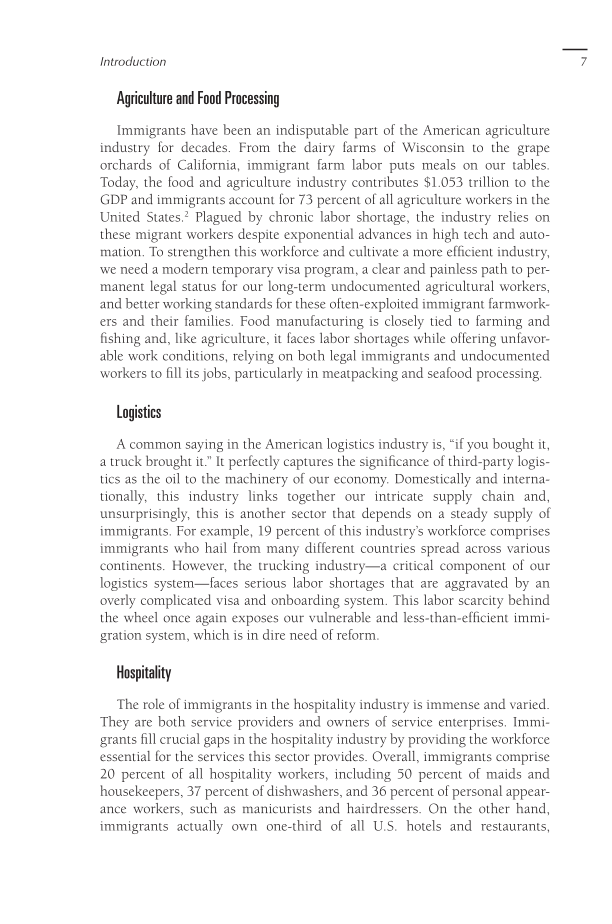Introduction 7 Agriculture and Food Processing Immigrants have been an indisputable part of the American agriculture industry for decades. From the dairy farms of Wisconsin to the grape orchards of California, immigrant farm labor puts meals on our tables. Today, the food and agriculture industry contributes $1.053 trillion to the GDP and immigrants account for 73 percent of all agriculture workers in the United States.2 Plagued by chronic labor shortage, the industry relies on these migrant workers despite exponential advances in high tech and auto- mation. To strengthen this workforce and cultivate a more efficient industry, we need a modern temporary visa program, a clear and painless path to per- manent legal status for our long-term undocumented agricultural workers, and better working standards for these often-exploited immigrant farmwork- ers and their families. Food manufacturing is closely tied to farming and fishing and, like agriculture, it faces labor shortages while offering unfavor- able work conditions, relying on both legal immigrants and undocumented workers to fill its jobs, particularly in meatpacking and seafood processing. Logistics A common saying in the American logistics industry is, “if you bought it, a truck brought it.” It perfectly captures the significance of third-party logis- tics as the oil to the machinery of our economy. Domestically and interna- tionally, this industry links together our intricate supply chain and, unsurprisingly, this is another sector that depends on a steady supply of immigrants. For example, 19 percent of this industry’s workforce comprises immigrants who hail from many different countries spread across various continents. However, the trucking industry—a critical component of our logistics system—faces serious labor shortages that are aggravated by an overly complicated visa and onboarding system. This labor scarcity behind the wheel once again exposes our vulnerable and less-than-efficient immi- gration system, which is in dire need of reform. Hospitality The role of immigrants in the hospitality industry is immense and varied. They are both service providers and owners of service enterprises. Immi- grants fill crucial gaps in the hospitality industry by providing the workforce essential for the services this sector provides. Overall, immigrants comprise 20 percent of all hospitality workers, including 50 percent of maids and housekeepers, 37 percent of dishwashers, and 36 percent of personal appear- ance workers, such as manicurists and hairdressers. On the other hand, immigrants actually own one-third of all U.S. hotels and restaurants,
Document Details My Account Print multiple pages
Print
You have printed 0 times in the last 24 hours.
Your print count will reset on at .
You may print 0 more time(s) before then.
You may print a maximum of 0 pages at a time.













































































































































































































































































































































































